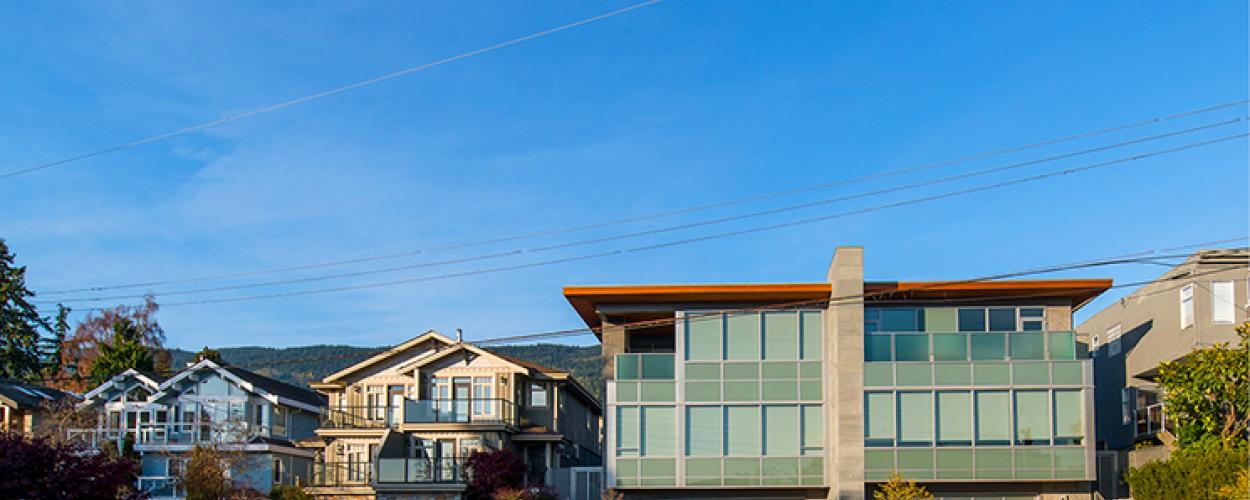
The BC Energy Step Code is a provincial standard that aims to create healthier, more energy-efficient and comfortable new buildings. It does so by establishing measurable performance-based energy-efficiency requirements for new construction.
Since July 1, 2018, building permit applications for new construction have been required to show compliance with the BC Energy Step Code. Updated minimum requirements will be effective November 1, 2023. The following table outlines the District of West Vancouver’s BC Energy Step Code requirements.
|
Building Type |
Current Requirements |
|---|---|
|
Part 9 residential (single family, townhouse and other Part 9 residential buildings)1 |
Pathway 1: Step 4 + ZCSC2 |
|
Part 9 detached secondary suite1 |
Pathway 1: Step 3 + ZCSC2 |
|
Part 3 residential (multi-family and apartment buildings) |
Pathway 1: Step 2 + ZCSC2 |
|
Part 3 business and personal services or mercantile (commercial, office and retail buildings) |
Step 2 + ZCSC2 |
¹Compliance with the Step Code will require the input of an Energy Advisor at various stages of the project, including design, construction, and building completion. Building Permit applications must include a performance modelling report along with construction details that show how the proposed house will comply with the BC Energy Step Code and the Zero Carbon Step Code pathway, if applicable.
2Zero Carbon Step Code (ZCSC) is a new Provincial standard introduced to the BC Building Code (BCBC) in May 2023 which limits operational greenhouse gas emissions from space conditioning and domestic hot water systems. Beginning November 1, 2023, the ZCSC Level EL-3 will replace the District of West Vancouver’s current Low Carbon Energy System (LCES) requirements.
Zero Carbon Step Code Level EL-3 general requirements (refer to BCBC Div. B Sections 9.37. or 10.3. for details):
- Part 9 Residential: modelled Greenhouse Gas Intensity (GHGI) of no more than 2.5 kg CO₂e/m²/year to a maximum GHG emissions of 800 kg CO₂e/year
- Part 3 Residential, Business and Personal Services, or Mercantile: maximum modelled GHGI in accordance with BCBC Table 10.3.1.3.
